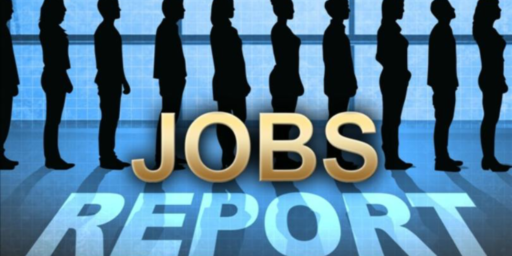Rising Cost of Health Benefits Cited as Factor in Slump of Jobs
Rising Cost of Health Benefits Cited as Factor in Slump of Jobs (Eduarto Porter, NYT) [RSS]
A relentless rise in the cost of employee health insurance has become a significant factor in the employment slump, as the labor market adds only a trickle of new jobs each month despite nearly three years of uninterrupted economic growth. Government data, industry surveys and interviews with employers big and small indicate that many businesses remain reluctant to hire full-time employees because health insurance, which now costs the nation’s employers an average of about $3,000 a year for each worker, has become one of the fastest-growing costs for companies. Health premiums are sapping corporate balance sheets even more than the rising cost of energy.
In the second quarter, the cost of health benefits rose at a 12-month rate of 8.1 percent – more than three times the inflation rate and the rate of increases in wages and salaries. “Health care is a major reason why employment growth has been so sluggish,” said Sung Won Sohn, the chief economist at Wells Fargo.
Although the economy emerged from recession long ago, posting 11 straight quarters of growth, there are still about a million fewer jobs in the United States than there were at the beginning of 2001, just before the country sank into recession.
A spurt in job growth between March and May raised hopes that employment would emerge from the doldrums. But job growth slowed sharply again in June and came to a virtual standstill last month. In July, businesses added a mere 32,000 jobs, and for the first time this year more businesses let workers go than hired new ones. Because of the cost of health insurance, “we are making decisions not to hire people,” said Steve Hayes, the owner of Custom Electronics in Falmouth, Me., which installs electronic systems like home theaters and communications networks in homes and offices. “Before, we hired based on workload,” he added. “Now it’s a question of affordability.”
Mr. Hayes said his health insurance premiums had risen by 22 percent a year in the last four years. He now pays $4,150 a month in health insurance premiums for his 33 employees, and the workers contribute an equal amount from their own pockets. The company’s revenue – less than $5 million annually – has been growing briskly, he said, but outlays for health benefits are growing even faster, eating into the company’s profits.
The increase in health insurance premiums reflects the rising cost of health care, which is being driven by expensive new drugs, many of them heavily advertised to consumers; medical advances including diagnostic tests that require costly new machines; and a reaction to past restrictions in managed care health plans that sought to rein in costs.
In the presidential campaign, both candidates have proposed measures for tackling the high cost of health insurance, including tax credits for small businesses and low-income people. President Bush has pointed out that consumers can buy relatively inexpensive, high-deductible insurance to protect against catastrophic illnesses and can pay for routine care with new tax-free health savings accounts. He also favors pending legislation that would let small businesses get volume discounts by buying insurance through trade associations, a plan that is opposed by many insurers, state insurance officials and some influential Senate Republicans. Critics say they are concerned that those associations would be largely exempt from state regulation and their insurance pools might attract healthier people, driving up costs for those who stay in the traditional insurance market. Senator John Kerry’s campaign plans to weigh in today with its own study of the link between rising health care costs and the employment slump. A summary of the report, which was prepared by Laura D. Tyson, who served as an economic adviser to President Bill Clinton, contends that industries with more health care benefits – like automobile manufacturing – have suffered the biggest losses in jobs and that those, like food service, that typically offer few benefits have realized the biggest gains. “We’re losing jobs in high-wage, high-benefits sectors like manufacturing, where employers are responding to this surge in health care costs,” Ms. Tyson said in an interview yesterday. A centerpiece of Mr. Kerry’s plan would be to reduce health insurance premiums by having the federal government pick up 75 percent of the cost of catastrophic medical care. That would reduce the cost to employers and employees about 10 percent, or $1,000 a year, according to campaign officials.
Neither plan seems to seriously address the issue. Coverage for catastrophic care is, of course, crucial. And, for young workers, probably enough. But employers could cover that pretty cheaply. The problem is paying for ordinary medical costs, which increasingly include extraordinarily expensive pharmaceuticals for even non-life threatening ailments. Unless costs themselves are brought down dramatically, the problem will spiral out of control. Even a “single payer” model isn’t going to be able to cope if costs continue to rise at this rate.




